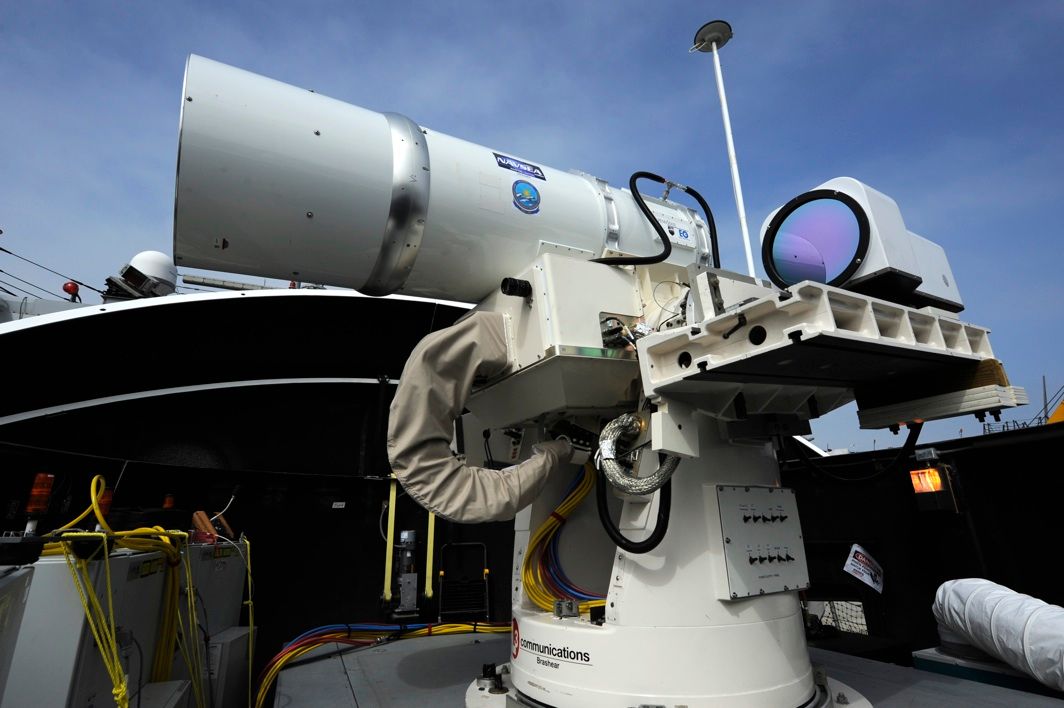The US military dreams of a
small but powerful laser weapon that can zap enemy rockets and drones from a safe distance. But weapons that have been demonstrated so far have been too big and heavy to fit on-board humvees and fighter jets. They’re also notoriously difficult to cool.
So key players in the defense industry have turned to fiber lasers to make the
military's dream a reality.
Lockheed Martin said last week that it has
demonstrated a 30kW fiber laser. In May 2013, Lockheed was able to shoot down rockets with a portable 10kW fiber laser from about 1.5 km. The company claims in a press release that this latest achievement is “the highest power ever documented while retaining beam quality and electrical efficiency” and that the fiber laser consumes half the power of more conventional solid-state laser.
MBDA Systems,
Raytheon, and
Northrop Grumman have all reported their own high-power fiber laser weapon feats in the past couple years. In October 2012, MBDA Systems’ German subsidiary used its
40kW system to shoot down airborne artillery from a distance of 2 km. The 40kW system was built with four 10kW sources provided by industrial fiber laser maker
IPG Photonics. Northrop Grumman is also busy developing high-power fiber lasers through
various military contracts, including the Army’s Robust Electric Laser Initiative.
Fiber lasers use a special type of optical fiber as the light-emitting material, as opposed to the neodymium-doped crystals used in conventional solid-state lasers. Because the fiber can be coiled, developers can pack more power into a compact system. They can be up to two times more efficient than traditional solid-state lasers, and the larger surface-to-volume ratio of the fibers makes them much easier to cool.
They do have a power limitation, though. Single-fiber lasers can’t achieve high power and beam quality. So most high-power systems, including Lockheed Martin's, combine beams from multiple fiber laser beam modules into a single high-quality beam. Some believe that the military's 100-kW benchmark power output for a laser weapon could be challenging to reach with fiber lasers.
That benchmark came about from an Army project from over a decade ago, which established that destroying a moving target from a kilometer or two away requires 100kW, mainly to overcome the spreading of the laser beam. But lasers have come a long way since, and as IEEE Spectrum outlines in the article "
Ray Guns Get Real", some experts question the necessity of a 100-kW laser system. The recent demonstrations mentioned above certainly show that lasers delivering tens of kilowatts could be of use.
The real test for fiber lasers could come later this year, when the
US Navy installs its laser weapon system on the USS Ponce transport ship, two years ahead of schedule. The Navy showed in 2010 that its laser weapon system, developed by Raytheon, could
shoot down unmanned aerial vehicles.

 Mitenköhän kauan menee ennenkuin tämän keksintö löytää tiensä sotilaslasuihin?
Mitenköhän kauan menee ennenkuin tämän keksintö löytää tiensä sotilaslasuihin?


